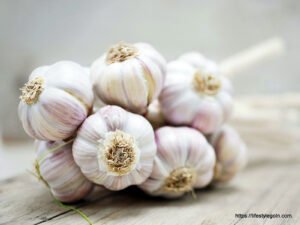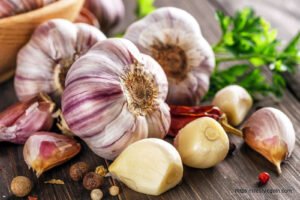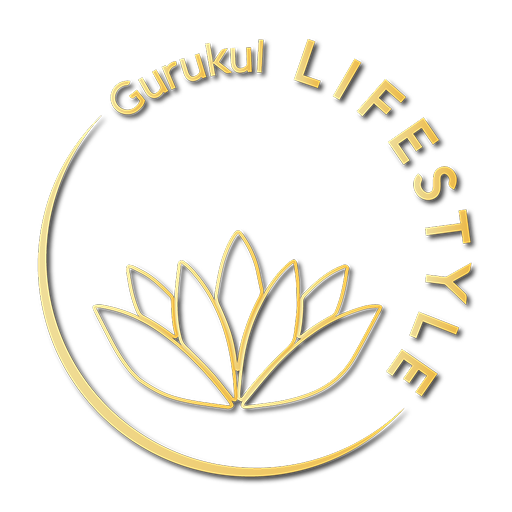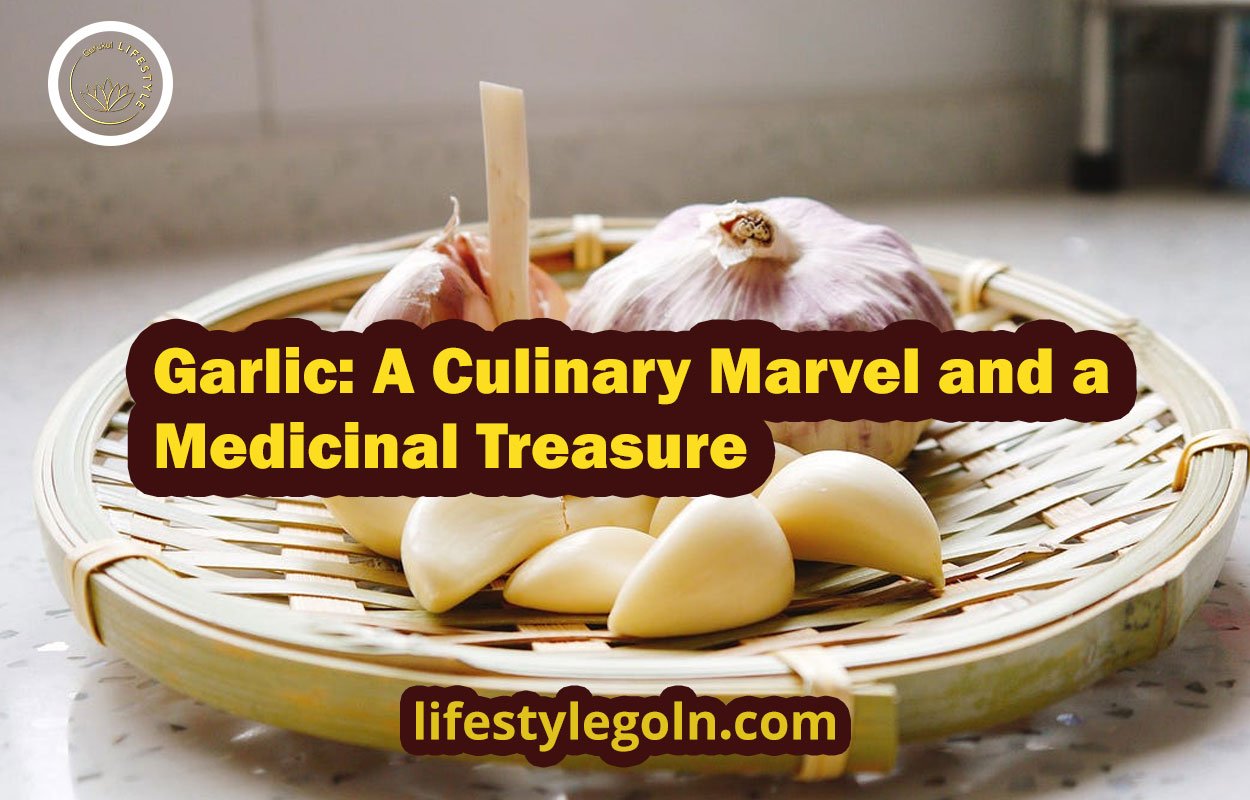Garlic, scientifically known as Allium sativum, is a plant from the Allium family, renowned for its distinctive aroma and flavor. Throughout history, garlic has held a prominent place in various cuisines and has been revered for its medicinal properties. From ancient civilizations to modern times, garlic has been recognized as a culinary marvel and a medicinal treasure. In this essay, we will delve into the history, nutritional composition, health benefits, and diverse uses of garlic, exploring its significance in both the culinary world and traditional medicine.
Garlic: A Culinary Marvel and a Medicinal Treasure

Section 1: Historical and Cultural Significance of Garlic
1.1 Ancient Uses:
Garlic’s history traces back thousands of years to ancient civilizations like Egypt, where it was revered for its medicinal properties and used as an offering to the gods. The ancient Greeks and Romans also valued garlic for its therapeutic benefits and included it in their daily diets. Garlic’s popularity spread along ancient trade routes, reaching Asia, Europe, and eventually the Americas.
1.2 Garlic in Folklore and Beliefs:
Garlic’s powerful aroma and perceived protective properties led to various cultural beliefs and folklore. In many cultures, garlic was believed to ward off evil spirits, vampires, and diseases. Its reputation as a protector against ailments contributed to its widespread use in traditional medicine.
1.3 Culinary Integration:
Garlic’s pungent and savory flavor makes it a staple ingredient in numerous culinary traditions worldwide. It is a key component of the Mediterranean diet and is frequently used in Asian, Middle Eastern, and Latin American cuisines. Its versatility and unique taste have made it an indispensable seasoning in various dishes, from soups and stews to sauces and marinades.

Section 2: Nutritional Composition of Garlic
2.1 Macronutrients:
Garlic is a low-calorie food, primarily composed of water. However, it also provides carbohydrates in the form of fiber and a small amount of protein. Its low-calorie content makes it a suitable addition to weight-conscious diets.
2.2 Micronutrients:
Garlic is rich in essential vitamins and minerals, making it a nutrient-dense food. Notably, it is an excellent source of vitamin C, which supports the immune system and acts as an antioxidant. Garlic also contains vitamins B6 and B9 (folate), which are crucial for metabolism and cellular function.
In terms of minerals, garlic provides significant amounts of manganese, phosphorus, calcium, potassium, and magnesium. These minerals play essential roles in bone health, nerve function, and maintaining electrolyte balance.
2.3 Sulfur-Containing Compounds:
The distinctive aroma and health benefits of garlic are attributed to its sulfur-containing compounds. Allicin, the primary bioactive compound in garlic, is formed when garlic is crushed or chopped. Allicin possesses potent antimicrobial and antioxidant properties, contributing to the many health benefits associated with garlic consumption.

Section 3: Health Benefits of Garlic
3.1 Immune System Support:
Garlic’s antimicrobial properties make it an excellent natural remedy for fighting infections. It has been used traditionally to alleviate symptoms of the common cold, flu, and other respiratory infections. Additionally, garlic’s immune-boosting effects can aid in the prevention of infections and promote overall immune system health.
3.2 Cardiovascular Health:
Numerous studies have shown that garlic can improve cardiovascular health. Regular consumption of garlic has been linked to a reduction in blood pressure, cholesterol levels, and triglycerides. These effects may help lower the risk of heart disease and stroke.
3.3 Antioxidant Properties:
Garlic’s sulfur-containing compounds, particularly allicin, act as powerful antioxidants. These compounds neutralize harmful free radicals in the body, reducing oxidative stress and minimizing cellular damage. Consequently, garlic may play a role in reducing the risk of chronic diseases, including certain cancers and neurodegenerative conditions.
3.4 Anti-Inflammatory Effects:
Garlic’s anti-inflammatory properties may help reduce inflammation in the body, which is a common factor in various chronic diseases, such as arthritis and inflammatory bowel disease. Regular consumption of garlic can contribute to improved overall well-being by promoting a balanced inflammatory response.
3.5 Digestive Health:
Garlic’s prebiotic properties support the growth of beneficial gut bacteria, contributing to a healthy gut microbiome. This can aid in digestion, improve nutrient absorption, and strengthen the immune system. Additionally, garlic’s antimicrobial properties may help combat harmful gut pathogens.

Section 4: Medicinal Uses of Garlic
4.1 Traditional Medicine:
Garlic has been used in traditional medicine systems, such as Ayurveda and Traditional Chinese Medicine, for thousands of years. It is believed to have a broad range of therapeutic effects, including treating respiratory conditions, digestive disorders, and skin infections. Additionally, garlic has been historically used as a natural remedy for hypertension, diabetes, and joint pain.
4.2 Modern Medicinal Applications:
In modern medicine, garlic has been the subject of numerous scientific studies investigating its potential medicinal applications. Some studies have explored garlic’s role in cancer prevention, given its antioxidant and anti-inflammatory properties. Other research has focused on its potential in managing high blood pressure and cholesterol levels.

Section 5: Culinary Uses of Garlic
5.1 Global Culinary Integration:
Garlic’s unique flavor and versatility make it a beloved ingredient in cuisines worldwide. It is a foundational element in many iconic dishes, such as Italian pasta sauces, French aioli, Indian curries, and Chinese stir-fries. Its ability to elevate the taste of both vegetarian and non-vegetarian dishes makes it a staple in diverse culinary traditions.
5.2 Cooking Techniques:
Garlic can be used in various forms, including fresh, dried, or as a paste. The cooking technique used can significantly impact its flavor profile. When raw, garlic has a sharp and pungent taste, while cooking or roasting garlic imparts a milder and sweeter flavor. The culinary possibilities with garlic are virtually limitless, allowing chefs and home cooks alike to experiment with its taste and aroma.

Section 6: Precautions and Potential Side Effects
6.1 Allergies and Sensitivities:
Some individuals may be allergic or sensitive to garlic, experiencing symptoms such as skin rashes, digestive discomfort, or respiratory issues. It is essential for those with known allergies or sensitivities to garlic to avoid its consumption and seek medical advice if necessary.
6.2 Medication Interactions:
Garlic may interact with certain medications, such as blood-thinning medications or anticoagulants, leading to potential complications. It is crucial for individuals taking prescription medications to consult their healthcare providers before incorporating large amounts of garlic into their diets.

Section 7: Culinary and Medicinal Recipes
7.1 Garlic-Roasted Chicken: Ingredients:
- 1 whole chicken (4-5 pounds)
- 10-12 garlic cloves, peeled and crushed
- 1 lemon, juiced and zested
- 2 tablespoons olive oil
- 1 teaspoon dried thyme
- Salt and pepper to taste
Instructions: Preheat the oven to 375°F (190°C). In a bowl, mix the crushed garlic, lemon juice, lemon zest, olive oil, dried thyme, salt, and pepper to form a marinade. Rub the marinade all over the chicken, ensuring it is evenly coated. Place the chicken in a roasting pan and roast in the preheated oven for approximately 1 hour and 30 minutes or until the internal temperature reaches 165°F (74°C). Let the chicken rest for a few minutes before carving and serving.
7.2 Garlic Honey Cough Syrup: Ingredients:
- 1 cup honey (preferably raw)
- 6-8 garlic cloves, finely chopped
- 1-inch piece of fresh ginger, peeled and grated
- 1 lemon, juiced
- Pinch of cayenne pepper (optional)
Instructions: In a glass jar, combine the finely chopped garlic, grated ginger, lemon juice, and cayenne pepper (if using). Pour the honey over the mixture and stir well. Seal the jar and let the mixture infuse for at least 24 hours. Take 1-2 teaspoons of the syrup as needed for soothing coughs and sore throats.

Garlic’s remarkable journey through history as a culinary marvel and a medicinal treasure highlights its enduring significance in human culture and health. From ancient civilizations to modern research laboratories, garlic has captivated the world with its unique aroma, flavor, and therapeutic properties.
As a nutrient-dense food rich in vitamins, minerals, and bioactive compounds, garlic offers a myriad of health benefits. Its potential in boosting the immune system, promoting cardiovascular health, and combatting inflammation makes it a valuable addition to a balanced diet.
Moreover, garlic’s long-established role in traditional medicine, coupled with emerging scientific research, highlights its potential as a natural remedy for various ailments and a subject of medical interest.
In the realm of culinary arts, garlic continues to inspire chefs and home cooks alike to create flavorful and savory dishes across a multitude of cuisines. Its versatility and ability to elevate the taste of various ingredients make it an indispensable ingredient in countless recipes.
As we continue to explore the multifaceted properties of garlic, it is essential to celebrate its historical legacy while embracing its modern applications. By incorporating garlic into our diets and exploring its diverse uses, we can savor its culinary magic and harness its medicinal potential, contributing to a healthier and more flavorful life.
See more:

